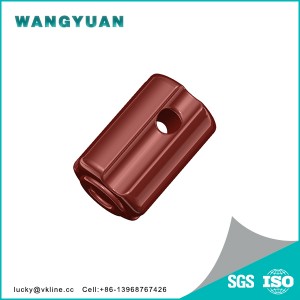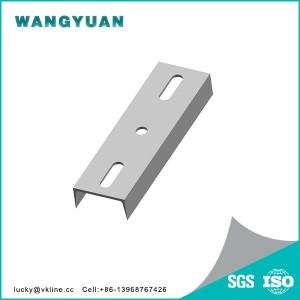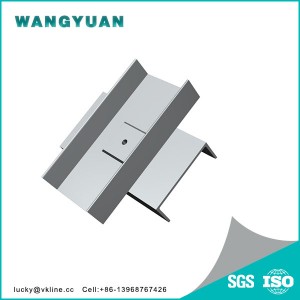Our Products
53kN Guy Insulator For Steel Stranded Wire 54-2
High quality porcelain ceramic 53kN stay guy insulator.
Specification:
| Type | 54-2 |
| Catalogue No. | 55542T |
| Application | Guy, Stay |
| Materials | Porcelain, ceramic |
| Mechanical failing load | 53kN |
| Creepage Distance | 47mm |
| Flashover Voltage (Dry) | 30kV |
| Flashover Voltage (Wet) | 15kV |
|
Color |
Gray or Brown |
| Weight | 0.63kg |
|
The Guide for Guy Insulator Chapter 1 – Types Of Guy Insulator Chapter 2– What is porcelain remain insulator or ceramic guy stress insulators? Chapter 3 –Structure Feature Of Guy Insulato
|
Chapter 1 – Types Of Guy Insulator
| Fig | 1 | 1 | 1 | 2 | |
| Class ANSI | 54-1 | 54-2 | 54-3 | 54-4 | |
| Dimensions | H | 88 | 108 | 140 | 171 |
| h | 44 | 57 | 79 | 68 | |
| hi | 64 | 76 | 103 | 114 | |
| D | 64 | 73 | 86 | 89 | |
| d | 44 | 54 | 80 | 60 | |
| di | 16 | 22 | 25 | 25 | |
| Mechainical faling load(KN0 | 44 | 53 | 89 | 89 | |
| Creepage distance(mm) | 41 | 47 | 57 | 76 | |
| Dry(kv) | 25 | 30 | 35 | 40 | |
| Flashover volage | Wet(kv) | 12 | 15 | 18 | 23 |
Chapter 2– What is porcelain remain insulator or ceramic guy stress insulator?
The ceramic guy stain insulator is generally an insulator with elongated shape, and the porcelain shear insulator has two cross holes or slots. Porcelain stehisoltor is mainly used for the tension wire structure to balance the voltage strength and also to ensure insulation. The colour is brown, grey or white.
In the case of low-voltage lines, the ceramic voltage insulator must be insulated at a height against earth. The ceramic clamping dehninsulattor used in the clamping wire is referred to as the clamping stretch insulator. It is usually made of porcelain and is designed in such a way that the clamping wire does not fall to the ground when the insulator breaks.
1. Install the wooden fence at least 3 meters above the ground and insulate between the beam and the connecting instrument
2. It is mainly used to prevent oblique lines from being interfered with carelessly under voltage.
3. Low load electric wiper or ceramic wiper.The device is used as an electrical breaker on a telephone pole to prevent the loss of electricity from causing friction to spread to the lower end of the pole where it is available to the public.
HOT-SALE PRODUCT
Quality First, Safety Guaranteed













